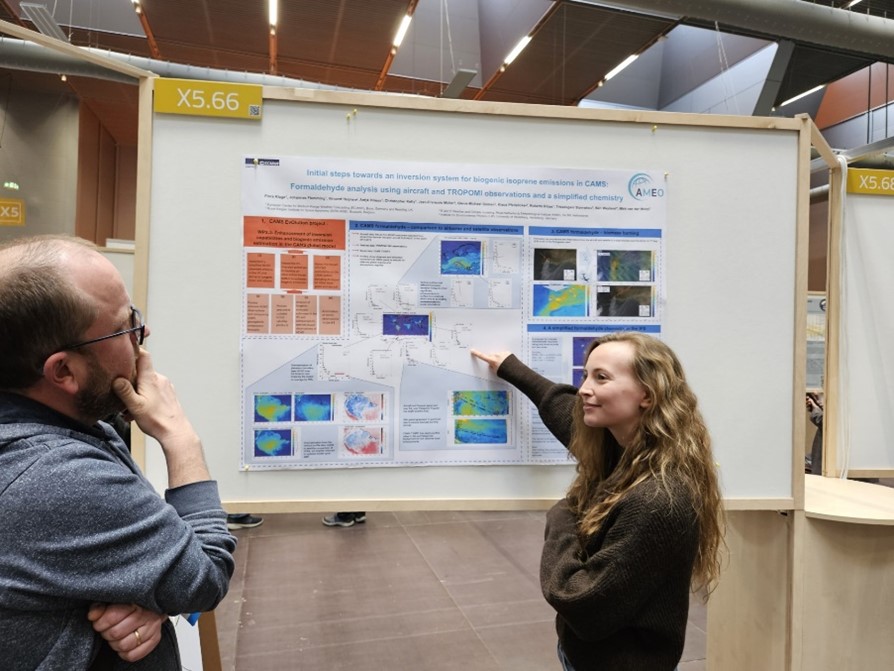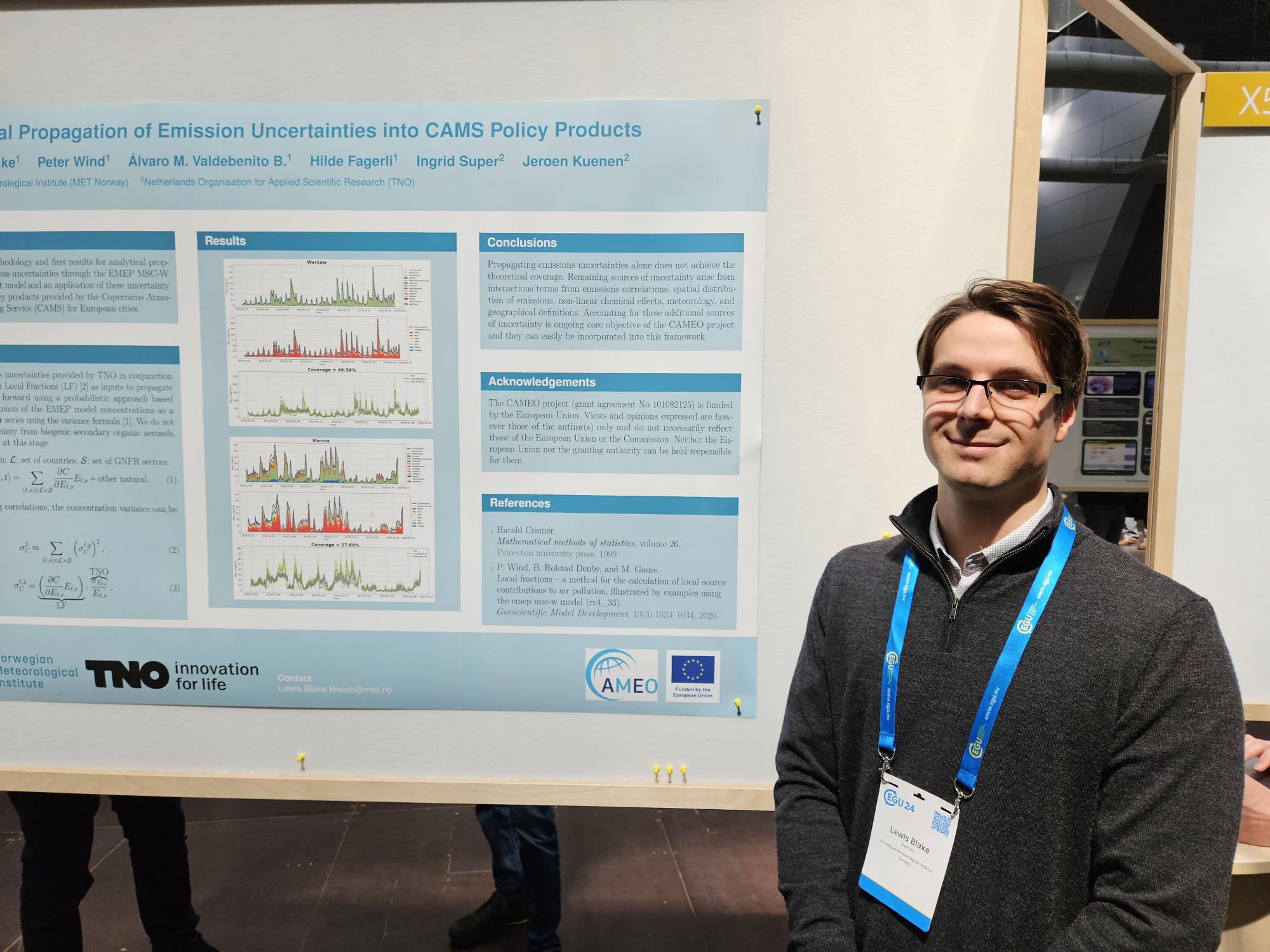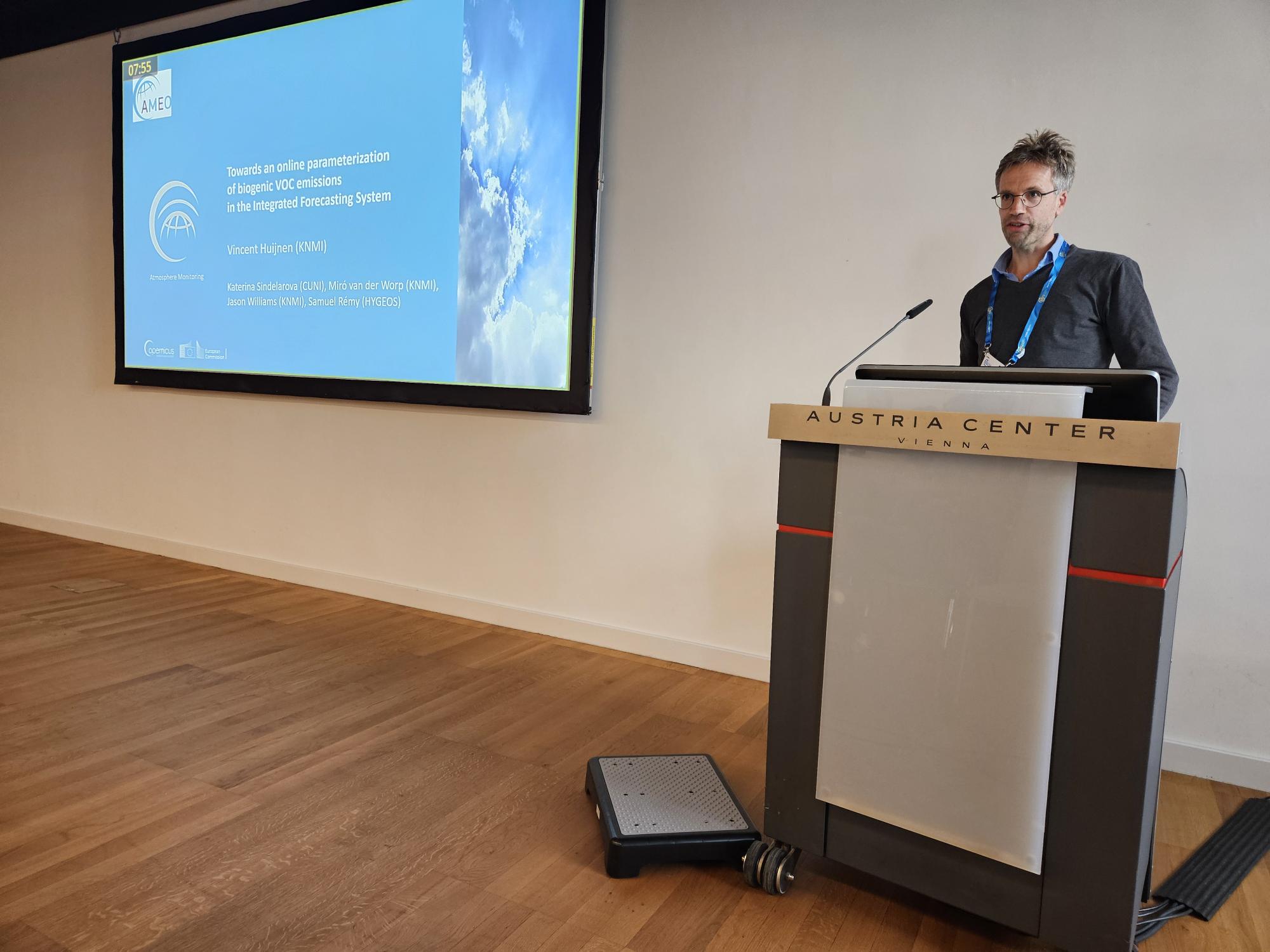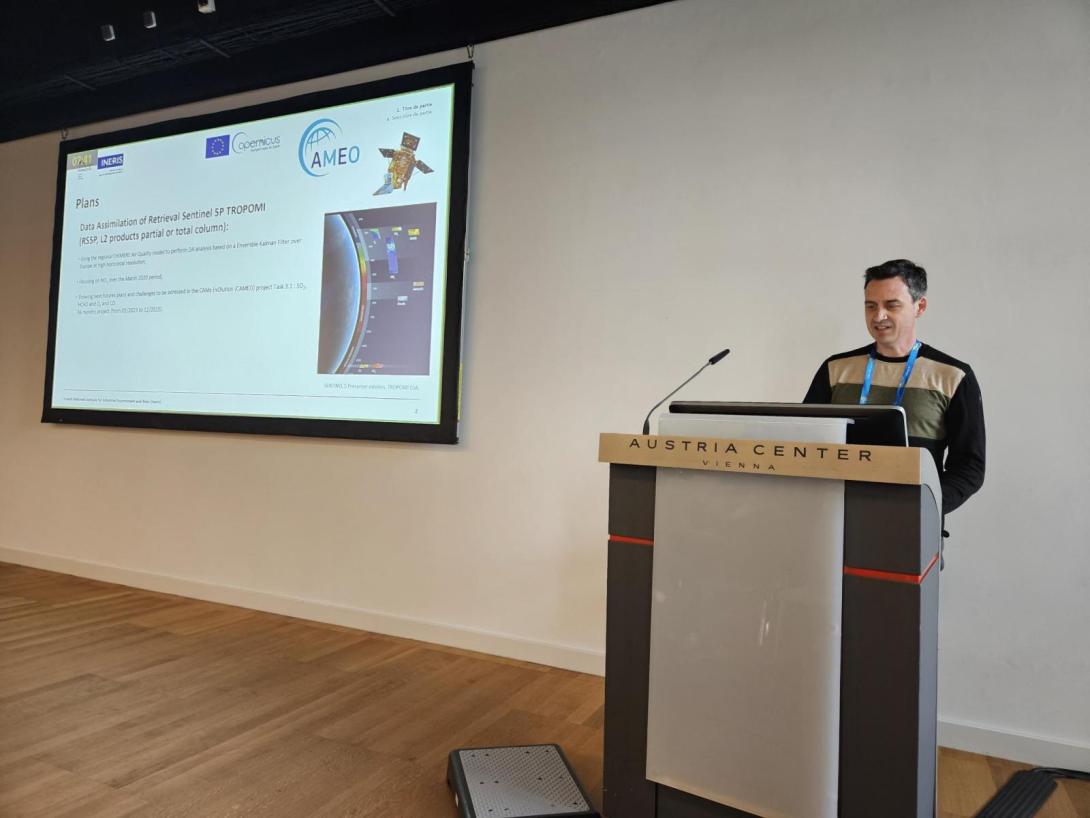The CAMEO project team report on a successful and worthwhile attendance at EGU 15th to 19th April 2024, with poster presentations from Flora Kluge, Lewis Blake and Oleg Dubovik and oral presentations from Zoi Paschalidi, Gael Descombes and Vincent Huijnen.
Zoi presented her pioneering work towards the assimilation of the Ozone and NO2 retrievals from the GEMS geostationary platform, which offers an unprecedented temporal resolution for air quality observations from space. The talk entitled “Integrating Geostationary Satellite Data for Advanced Air Quality Modeling: Evaluating GEMS NRT Observations within the ECMWF’s IFS system for the HE CAMEO Project”, was well received and the subsequent discussions with colleagues from South Korea, the United States and Europe will help to improve the use of this novel data set.
Flora, Lewis, Vincent and Oleg talk about their experience at EGU below:
Flora presented her poster “ Initial steps towards an inversion system for biogenic isoprene emissions in CAMS: Verification using HALO mini-DOAS and TROPOMI observations and simplified chemistry,” and reports that "The presented formaldehyde data set and the derived regional vertical profiles, as well as their comparison to CAMS simulations, lead to interesting discussions about recent findings from other model and observations. The main interest was in our analysis in tropical rainforest regions, where the performance of different models as well as other recent data sets including isoprene were discussed."

Flora Kluge: poster presentation
Lewis’s poster on “Analytical Propagation of Emission Uncertainties into CAMS Policy Products” showcased aspects of his work to date. Lewis states “Most of the queries and comments were about understanding the method and how to account for uncertainties due to non-linearities through inclusion of correlation terms. These extensions are being developed as part of the CAMEO project."

Lewis Blake: poster presentation
Vincent presented “Towards an online parameterization of biogenic VOC emissions in the Integrated Forecasting System” and reports “ The assembly has been a great opportunity to catch up with the scientific community, which is of use for the applications we are developing in CAMEO, in particular related to the role of biogenic emissions in the earth system. I learned about new satellite retrieval products, and its expected quality, new measurements of chemical pathways relevant to organic chemistry, and, for instance, modern ways to build, and maintain, complex modeling systems. This helps me to shape future directions in our research”

Vincent Huijnen presenting at EGU
Oleg's poster was "Harmonization of the assumptions of atmospheric aerosol properties in climate models and remote sensing approaches" and he comments on the scientific discussions “The presented material attracted rather extensive group of researchers involved in (Models, In situ, and Remote sensing of Aerosols) MIRA initiative https://espo.nasa.gov/lists/listinfo/mira . Several suggestions for optimising aerosol assumptions (complex refractive indices, etc.) in CAMS and other climate models were suggested. Also, it was agreed with Greg Schuster of NASA (lead of MIRA) to organise specific a dedicated section on upcoming meeting APOLO-2024 (Nov., Japan, https://apolo.loa.univ-lille.fr/). “
CAMEO Project Coordinator Johannes Flemming, who was also Session organizer for “Atmospheric Composition and Numerical Weather Forecasting”, comments “The team did a great job presenting the latest CAMEO scientific results at EGU. There was a lot of interest from the scientific community represented at the EGU. I believe the CAMEO project has been put on the map. The science feedback on our results to date has been very positive”.
Photographs courtesy of the CAMEO project team.

